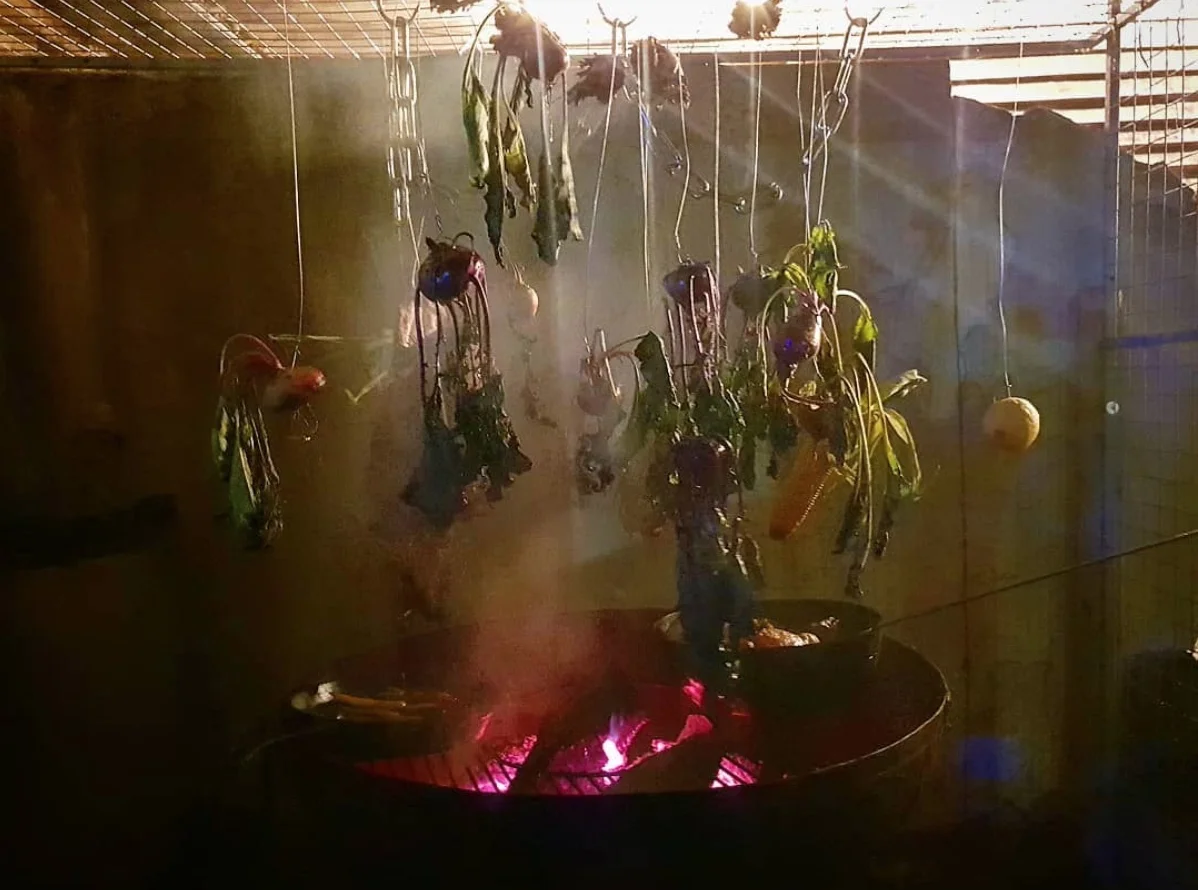Slow sloe vinegar
Each autumn, English hedgerows are festooned with the lustered blue berries of the sloe, or blackthorn (Prunus spinosa), and every year, millions of them are infused into gin, which is a great way to enjoy them. But surely not the only way ? Inspired by an amazing and confounding dish made by the indefatigably innovative Rosio Sanchez, pastry chef at Restaurant Noma in Copenhagen, which consisted of discs of frozen sloe juice with brunost (‘Brown Cheese’ - caramelised whey cheese), I have been scouring the hedges in October and November to use sloes in cookery. The fruit is incredibly astringent, very aromatic, and hard as hell. They are supposed to be harvested after frost, which makes them softer and more easily processed. They recall cranberries in flavour, but with a distinctive complexity also reminiscent of port wine, in fact, it is said to have been used historically to make ‘spurious port' or to roughen actual port.
I recently made a ‘fast’ vinegar by adding a measure of 88% Baltik vodka to a bottle of sweetened and cooked sloe juice and innoculating the whole with live apple vinegar, which was brilliant, if lacking in depth and character. As is often the case, slowing the process down should result in a more complex vinegar, and so with my last batch of sloes (picked with the help of my ten year old nephew Reuben in Gloucestershire) I decided to go through the traditional method of vinegar making - fermenting the juice into a ‘country wine’, and then acetifying the wine.
I cooked the sloes with brown sugar in a vacuum bag for ten hours at 70C, primarily to extract as much flavour from the must, and secondarily to pasteurise and detoxify the kernels*. Given the realtively small amount of fruit I had, I made a second infusion of the must in water, reduced it slightly and added to the main amount. Since this was the first wine I have tried to make, I spent quite some time researching the process of alcoholisation and the systems of analysis - for which I finally got to use my new hydrometer and refractometer - and I was more rigorous than usual in writing down all measurements and methods, resisting my usual urge to just fling a bunch of things together, stand back and wait.
I added some ‘SN9 Wine Yeast’ (Saccharomyces bayanus) which I happened to have in my store cupboard, bought for a bread making experiment. According to the manufacturer’ blurb, it is good for fortified and country wines and is robust enough to survive mistakes on the part of the amateur, which is nice coincidence.
Since I don’t own any actual fermenting vessels, I tend to use glass bottles from Duskin - a Kentish company who bottle a bewildering variety of single variety apple juices - for all my fermented drinks and kombuchas. They have a pleasant curve and it means I get to drink a lot of great apple juice.
I have 1800g of liquid, with around 450g of sugar, .5g yeast, a handful of sloe must, and will add some crushed kernels after the first fermentation. I expect it to have turned to alcohol in between 7 and 14 days, and after that i shall open it to the air (acetification being an aerobic process) keep it at around 21C, and let it develop for a few months. It’s a long time to wait, especially if it is crap in the end, which is entirely possible. If it’s good, I expect it will become a prolific ingredient in my cooking.
* Like many members of the genus Prunus, the kernels inside the stones have a glycoside called amygdalin, which reacts to mechanical destruction by producing benzaldehyde (the aroma characteristic of bitter almonds) and hydrogen cyanide. Obviously the first is desirable, the second not so much..
























